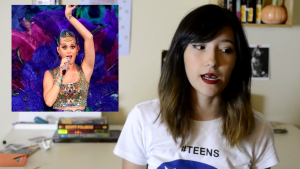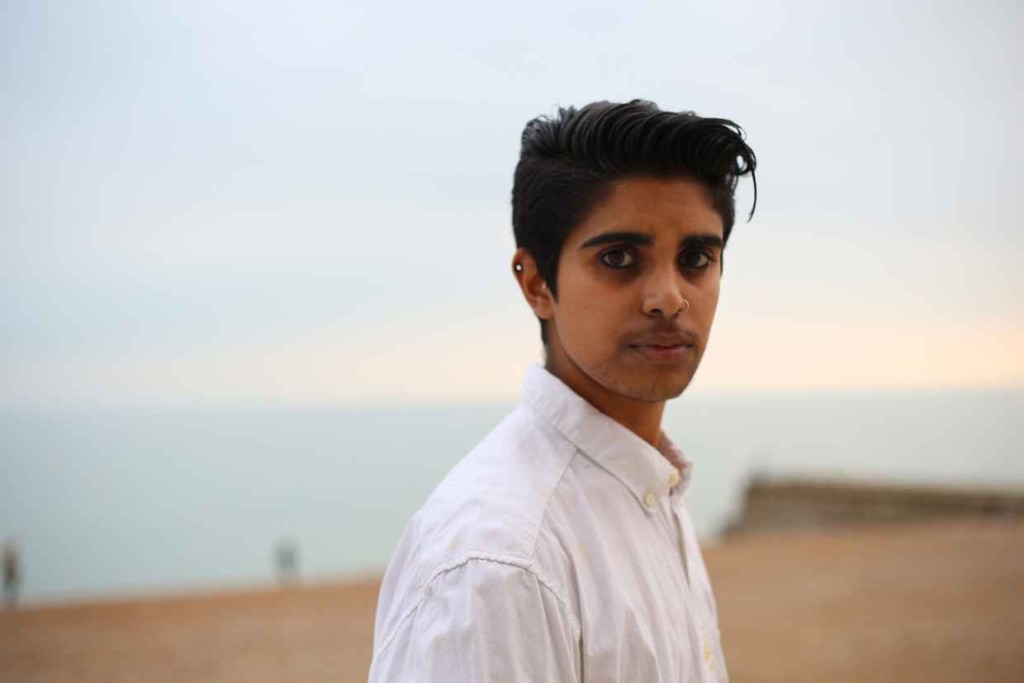 March 31, 2015 / Sabah Choudrey
March 31, 2015 / Sabah Choudrey Originally published on xoJane and republished here with their permission.
I have a long history of hair removal.
It started when I was very young, too young maybe, but not for us brown girls, us hairy brown girls.
I was about 10 years old, I had a furry upper lip and the kids at school made fun of me.
They made fun of us brown hairy girls. I told my mother and she called the neighbor round, a brown girl, and she waxed it all off us, us hairy brown girls.
I have a long history of hair removal, but so does my sister, so does my mother, and so do her sisters. We’re Pakistani, from South Asia, and for a lot of us that means we are dark-haired and dark-skinned.
It’s just the way we are.
It’s not the way others want us to be.
From Western beauty standards to the male gaze, even from our mothers and sisters and fathers and brothers, we are told to remove our body hair, remove our facial hair, remove our pubic hair . . . .
Return to a pre-pubescent female body, and lighten your skin whilst you’re at it. They aren’t pretty, hairy brown girls.
I type into a Google search bar: “South Asian women hairy” and I find “XXX South Asian Hairy Girls” and other explicit titles navigating me to porn channels, with the occasional advertisement on hair removal and laser treatments.
Just in case being fetishized put you off.
Even though every three weeks my downy moustache ceased to exist, I never thought much of my hair when I was younger.
It grew across my forehead, with my hairline bleeding into my brows and down into my sideburns, thickening around my chin and upper lip.
My arms were covered in a coat of black hair, thickening on my forearms. My legs were the same, a noticeable dark fleece of fur.
That was the second to go.
I remember the day I found out my sister was shaving her legs — she had been doing it for a while. I was so upset with her.
It felt like she had kept this secret from me, and being the same age (we’re twins), I thought we were going to do everything together as hairy brown girls. I felt like she was growing into a woman before me, and I was left behind.
So I started shaving my legs.
I was 13. And I was the last girl in my year at school to do it.
It was a predominantly South Asian school. We were all united by hair, but, of course, you couldn’t tell.
I remember looking at our skinny brown legs during sports class, shivering in skirts whilst we played netball.
I remember listening to conversations about how long shaving our legs takes, how much hassle it is, where we missed a spot, and where we keep catching our ankles.
I remember talking with my best friends about shaving the bare minimum, which was about an inch above the knee, where our shorts and skirts sit, giving the illusion of completely hairless legs.
We called them “hair shorts” and we wore them with a forbidden kind of pride.
I knew I was always hairy. But my parents couldn’t accept that.
My mother wanted to remove it. My dad wanted to know why it was there in the first place.
I was still in secondary school and I had visited the GP countless times about my hair, having blood taken for hormone tests and testosterone checks, being asked about polycystic ovary syndrome (PCOS) and given the contraceptive pill when I wasn’t even old enough to be using it.
This was on top of being waxed, plucked, shaved, lasered, tweezed, and threaded.
Dad would point out the thickening chin hair on my face at a random point in the day and ask, “Does it bother you?”
Those questions bothered me more.
The truth is, there was nothing wrong with me. My hormone levels were fine. I didn’t have PCOS. And with regular and expensive hair removal treatments, my self esteem was doing okay.
As our family general practitioner, Dr. Sharma, said, “It’s just the way you are.”
It’s just the way us hairy brown girls are.
Fast forward with me five or so years and you’ll start to see the irony.
I had moved out of London and down to sunny and gay Brighton. I was out of my brown comfort zone, entering into a world which was predominantly white and privately racist.
I was forced to keep my hair removal a secret, knowing I wouldn’t find solidarity but shock, horror, and disgust.
It took several conversations for me to realize my true identity belonged under a trans-masculine umbrella, and I came to the realization that after years of avoiding and removing hair, I was going to have to embrace it.
It took me two years after I started using he/him/his pronouns to finally let the hair on my face grow. It was really hard.
Even though I presented as male, I couldn’t bring myself to let the hair on my face grow out.
It should have been an easy decision — I know many trans men who would jump at the chance to have a beard before a prescription.
But it symbolized the hairy brown girl I was for so long, reminding me I was un-pretty and unwanted. It was connected to so much pain.
The hair on my face didn’t represent masculinity at all. My beard wasn’t what made me a man.
I remember sitting with an endocrinologist in a private gender identity clinic, hoping for a prescription for testosterone.
I was hoping the appointment would be fast and easy but this doctor was very fixated on my facial hair.
He was white.
He presented me with a test, called the Ferriman-Gallwey Score. It’s a crude set of simple drawings of different parts of the body with varying degrees of hair. Its most practical use is evaluating hirsutism in women and diagnosing PCOS.
Here the patient is expected to point to which picture reflects their hair growth. Considering it is a Caucasian set of photos, none of the pictures reflected my hair growth, surprisingly.
I felt so much shame and fear, and I panicked. Was he taking into account cultural differences? Did he understand how totally flawed and rudimentary this test is?
I don’t think it would have mattered what score I ended up with. I was just a hairy brown girl so I shut my hairy brown mouth and left.
The question always comes up, “How long have you been on T for? What are you on?” And I feel a sudden panic to lie and make something up, make it up that I’m using testosterone.
I want to lie because I’m not using hormones and I don’t think I’m trans enough. I want to lie because I am so deeply embarrassed of the hairy brown girl in front of them.
I declare, “I’m not on hormones actually.”
And there’s a shift.
For a second, they see the hairy brown girl, they see her in the way the kids at school saw her. And then they come back with, “You’re so lucky. You pass so well. I’m so jealous of your beard.”
Without thinking about what it was like being a hairy brown girl, my hairy brown girl experience is erased.
No one sees my color. They just see my hair.
The comment always comes up, “You’re so brave, growing that out, I really respect that,” and I realize people see me as a girl with a beard.
Something hits me, and it’s painful.
For a second, they see the hairy brown girl. And I realize the lips those words came out belong to a face, and that face has white skin and thirsty eyes that are looking at me and flirting with me and undressing me.
“I’m a guy, I’m trans. I’m a trans guy.” I stutter, feeling a disappointment I can’t quite describe.
I’m reduced to a fetish Google knows very well.
No one sees my gender. And they just see my hair.
And I’m taken back to when I was a child. I was about 10 years old. I had a furry upper lip and the kids at school made fun of me.
They still make fun of us, hairy brown girls.
[do_widget id=”text-101″]
Sabah Choudrey is a Pakistani trans activist with a passion for his community. His tiny head is full of big ideas, having founded Trans Pride Brighton in 2012, the first trans march and trans celebration in the UK, the QTIPOC Brighton Network for queer, trans and intersex people of colour, and desiQ for queer South Asian people in London/South East area. Check out his website and follow him on Twitter @SabahChoudrey.
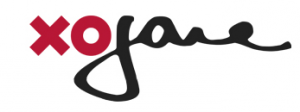
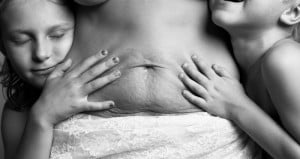
 March 31, 2015 / Sabah Choudrey
March 31, 2015 / Sabah Choudrey Originally published on xoJane and republished here with their permission.
I have a long history of hair removal.
It started when I was very young, too young maybe, but not for us brown girls, us hairy brown girls.
I was about 10 years old, I had a furry upper lip and the kids at school made fun of me.
They made fun of us brown hairy girls. I told my mother and she called the neighbor round, a brown girl, and she waxed it all off us, us hairy brown girls.
I have a long history of hair removal, but so does my sister, so does my mother, and so do her sisters. We’re Pakistani, from South Asia, and for a lot of us that means we are dark-haired and dark-skinned.
It’s just the way we are.
It’s not the way others want us to be.
From Western beauty standards to the male gaze, even from our mothers and sisters and fathers and brothers, we are told to remove our body hair, remove our facial hair, remove our pubic hair . . . .
Return to a pre-pubescent female body, and lighten your skin whilst you’re at it. They aren’t pretty, hairy brown girls.
I type into a Google search bar: “South Asian women hairy” and I find “XXX South Asian Hairy Girls” and other explicit titles navigating me to porn channels, with the occasional advertisement on hair removal and laser treatments.
Just in case being fetishized put you off.
Even though every three weeks my downy moustache ceased to exist, I never thought much of my hair when I was younger.
It grew across my forehead, with my hairline bleeding into my brows and down into my sideburns, thickening around my chin and upper lip.
My arms were covered in a coat of black hair, thickening on my forearms. My legs were the same, a noticeable dark fleece of fur.
That was the second to go.
I remember the day I found out my sister was shaving her legs — she had been doing it for a while. I was so upset with her.
It felt like she had kept this secret from me, and being the same age (we’re twins), I thought we were going to do everything together as hairy brown girls. I felt like she was growing into a woman before me, and I was left behind.
So I started shaving my legs.
I was 13. And I was the last girl in my year at school to do it.
It was a predominantly South Asian school. We were all united by hair, but, of course, you couldn’t tell.
I remember looking at our skinny brown legs during sports class, shivering in skirts whilst we played netball.
I remember listening to conversations about how long shaving our legs takes, how much hassle it is, where we missed a spot, and where we keep catching our ankles.
I remember talking with my best friends about shaving the bare minimum, which was about an inch above the knee, where our shorts and skirts sit, giving the illusion of completely hairless legs.
We called them “hair shorts” and we wore them with a forbidden kind of pride.
I knew I was always hairy. But my parents couldn’t accept that.
My mother wanted to remove it. My dad wanted to know why it was there in the first place.
I was still in secondary school and I had visited the GP countless times about my hair, having blood taken for hormone tests and testosterone checks, being asked about polycystic ovary syndrome (PCOS) and given the contraceptive pill when I wasn’t even old enough to be using it.
This was on top of being waxed, plucked, shaved, lasered, tweezed, and threaded.
Dad would point out the thickening chin hair on my face at a random point in the day and ask, “Does it bother you?”
Those questions bothered me more.
The truth is, there was nothing wrong with me. My hormone levels were fine. I didn’t have PCOS. And with regular and expensive hair removal treatments, my self esteem was doing okay.
As our family general practitioner, Dr. Sharma, said, “It’s just the way you are.”
It’s just the way us hairy brown girls are.
Fast forward with me five or so years and you’ll start to see the irony.
I had moved out of London and down to sunny and gay Brighton. I was out of my brown comfort zone, entering into a world which was predominantly white and privately racist.
I was forced to keep my hair removal a secret, knowing I wouldn’t find solidarity but shock, horror, and disgust.
It took several conversations for me to realize my true identity belonged under a trans-masculine umbrella, and I came to the realization that after years of avoiding and removing hair, I was going to have to embrace it.
It took me two years after I started using he/him/his pronouns to finally let the hair on my face grow. It was really hard.
Even though I presented as male, I couldn’t bring myself to let the hair on my face grow out.
It should have been an easy decision — I know many trans men who would jump at the chance to have a beard before a prescription.
But it symbolized the hairy brown girl I was for so long, reminding me I was un-pretty and unwanted. It was connected to so much pain.
The hair on my face didn’t represent masculinity at all. My beard wasn’t what made me a man.
I remember sitting with an endocrinologist in a private gender identity clinic, hoping for a prescription for testosterone.
I was hoping the appointment would be fast and easy but this doctor was very fixated on my facial hair.
He was white.
He presented me with a test, called the Ferriman-Gallwey Score. It’s a crude set of simple drawings of different parts of the body with varying degrees of hair. Its most practical use is evaluating hirsutism in women and diagnosing PCOS.
Here the patient is expected to point to which picture reflects their hair growth. Considering it is a Caucasian set of photos, none of the pictures reflected my hair growth, surprisingly.
I felt so much shame and fear, and I panicked. Was he taking into account cultural differences? Did he understand how totally flawed and rudimentary this test is?
I don’t think it would have mattered what score I ended up with. I was just a hairy brown girl so I shut my hairy brown mouth and left.
The question always comes up, “How long have you been on T for? What are you on?” And I feel a sudden panic to lie and make something up, make it up that I’m using testosterone.
I want to lie because I’m not using hormones and I don’t think I’m trans enough. I want to lie because I am so deeply embarrassed of the hairy brown girl in front of them.
I declare, “I’m not on hormones actually.”
And there’s a shift.
For a second, they see the hairy brown girl, they see her in the way the kids at school saw her. And then they come back with, “You’re so lucky. You pass so well. I’m so jealous of your beard.”
Without thinking about what it was like being a hairy brown girl, my hairy brown girl experience is erased.
No one sees my color. They just see my hair.
The comment always comes up, “You’re so brave, growing that out, I really respect that,” and I realize people see me as a girl with a beard.
Something hits me, and it’s painful.
For a second, they see the hairy brown girl. And I realize the lips those words came out belong to a face, and that face has white skin and thirsty eyes that are looking at me and flirting with me and undressing me.
“I’m a guy, I’m trans. I’m a trans guy.” I stutter, feeling a disappointment I can’t quite describe.
I’m reduced to a fetish Google knows very well.
No one sees my gender. And they just see my hair.
And I’m taken back to when I was a child. I was about 10 years old. I had a furry upper lip and the kids at school made fun of me.
They still make fun of us, hairy brown girls.
[do_widget id=”text-101″]
Sabah Choudrey is a Pakistani trans activist with a passion for his community. His tiny head is full of big ideas, having founded Trans Pride Brighton in 2012, the first trans march and trans celebration in the UK, the QTIPOC Brighton Network for queer, trans and intersex people of colour, and desiQ for queer South Asian people in London/South East area. Check out his website and follow him on Twitter @SabahChoudrey.

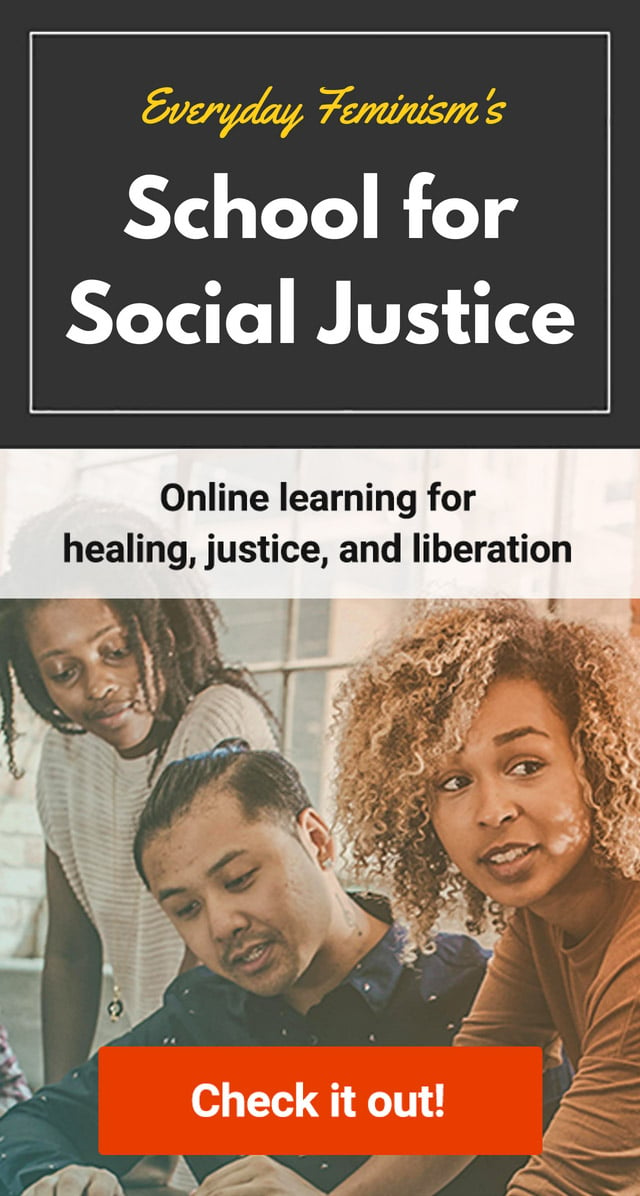


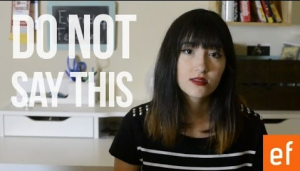
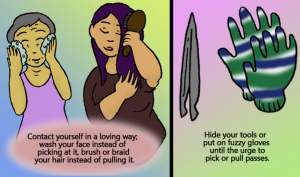
 March 31, 2015 / Sabah Choudrey
March 31, 2015 / Sabah Choudrey Originally published on xoJane and republished here with their permission.
I have a long history of hair removal.
It started when I was very young, too young maybe, but not for us brown girls, us hairy brown girls.
I was about 10 years old, I had a furry upper lip and the kids at school made fun of me.
They made fun of us brown hairy girls. I told my mother and she called the neighbor round, a brown girl, and she waxed it all off us, us hairy brown girls.
I have a long history of hair removal, but so does my sister, so does my mother, and so do her sisters. We’re Pakistani, from South Asia, and for a lot of us that means we are dark-haired and dark-skinned.
It’s just the way we are.
It’s not the way others want us to be.
From Western beauty standards to the male gaze, even from our mothers and sisters and fathers and brothers, we are told to remove our body hair, remove our facial hair, remove our pubic hair . . . .
Return to a pre-pubescent female body, and lighten your skin whilst you’re at it. They aren’t pretty, hairy brown girls.
I type into a Google search bar: “South Asian women hairy” and I find “XXX South Asian Hairy Girls” and other explicit titles navigating me to porn channels, with the occasional advertisement on hair removal and laser treatments.
Just in case being fetishized put you off.
Even though every three weeks my downy moustache ceased to exist, I never thought much of my hair when I was younger.
It grew across my forehead, with my hairline bleeding into my brows and down into my sideburns, thickening around my chin and upper lip.
My arms were covered in a coat of black hair, thickening on my forearms. My legs were the same, a noticeable dark fleece of fur.
That was the second to go.
I remember the day I found out my sister was shaving her legs — she had been doing it for a while. I was so upset with her.
It felt like she had kept this secret from me, and being the same age (we’re twins), I thought we were going to do everything together as hairy brown girls. I felt like she was growing into a woman before me, and I was left behind.
So I started shaving my legs.
I was 13. And I was the last girl in my year at school to do it.
It was a predominantly South Asian school. We were all united by hair, but, of course, you couldn’t tell.
I remember looking at our skinny brown legs during sports class, shivering in skirts whilst we played netball.
I remember listening to conversations about how long shaving our legs takes, how much hassle it is, where we missed a spot, and where we keep catching our ankles.
I remember talking with my best friends about shaving the bare minimum, which was about an inch above the knee, where our shorts and skirts sit, giving the illusion of completely hairless legs.
We called them “hair shorts” and we wore them with a forbidden kind of pride.
I knew I was always hairy. But my parents couldn’t accept that.
My mother wanted to remove it. My dad wanted to know why it was there in the first place.
I was still in secondary school and I had visited the GP countless times about my hair, having blood taken for hormone tests and testosterone checks, being asked about polycystic ovary syndrome (PCOS) and given the contraceptive pill when I wasn’t even old enough to be using it.
This was on top of being waxed, plucked, shaved, lasered, tweezed, and threaded.
Dad would point out the thickening chin hair on my face at a random point in the day and ask, “Does it bother you?”
Those questions bothered me more.
The truth is, there was nothing wrong with me. My hormone levels were fine. I didn’t have PCOS. And with regular and expensive hair removal treatments, my self esteem was doing okay.
As our family general practitioner, Dr. Sharma, said, “It’s just the way you are.”
It’s just the way us hairy brown girls are.
Fast forward with me five or so years and you’ll start to see the irony.
I had moved out of London and down to sunny and gay Brighton. I was out of my brown comfort zone, entering into a world which was predominantly white and privately racist.
I was forced to keep my hair removal a secret, knowing I wouldn’t find solidarity but shock, horror, and disgust.
It took several conversations for me to realize my true identity belonged under a trans-masculine umbrella, and I came to the realization that after years of avoiding and removing hair, I was going to have to embrace it.
It took me two years after I started using he/him/his pronouns to finally let the hair on my face grow. It was really hard.
Even though I presented as male, I couldn’t bring myself to let the hair on my face grow out.
It should have been an easy decision — I know many trans men who would jump at the chance to have a beard before a prescription.
But it symbolized the hairy brown girl I was for so long, reminding me I was un-pretty and unwanted. It was connected to so much pain.
The hair on my face didn’t represent masculinity at all. My beard wasn’t what made me a man.
I remember sitting with an endocrinologist in a private gender identity clinic, hoping for a prescription for testosterone.
I was hoping the appointment would be fast and easy but this doctor was very fixated on my facial hair.
He was white.
He presented me with a test, called the Ferriman-Gallwey Score. It’s a crude set of simple drawings of different parts of the body with varying degrees of hair. Its most practical use is evaluating hirsutism in women and diagnosing PCOS.
Here the patient is expected to point to which picture reflects their hair growth. Considering it is a Caucasian set of photos, none of the pictures reflected my hair growth, surprisingly.
I felt so much shame and fear, and I panicked. Was he taking into account cultural differences? Did he understand how totally flawed and rudimentary this test is?
I don’t think it would have mattered what score I ended up with. I was just a hairy brown girl so I shut my hairy brown mouth and left.
The question always comes up, “How long have you been on T for? What are you on?” And I feel a sudden panic to lie and make something up, make it up that I’m using testosterone.
I want to lie because I’m not using hormones and I don’t think I’m trans enough. I want to lie because I am so deeply embarrassed of the hairy brown girl in front of them.
I declare, “I’m not on hormones actually.”
And there’s a shift.
For a second, they see the hairy brown girl, they see her in the way the kids at school saw her. And then they come back with, “You’re so lucky. You pass so well. I’m so jealous of your beard.”
Without thinking about what it was like being a hairy brown girl, my hairy brown girl experience is erased.
No one sees my color. They just see my hair.
The comment always comes up, “You’re so brave, growing that out, I really respect that,” and I realize people see me as a girl with a beard.
Something hits me, and it’s painful.
For a second, they see the hairy brown girl. And I realize the lips those words came out belong to a face, and that face has white skin and thirsty eyes that are looking at me and flirting with me and undressing me.
“I’m a guy, I’m trans. I’m a trans guy.” I stutter, feeling a disappointment I can’t quite describe.
I’m reduced to a fetish Google knows very well.
No one sees my gender. And they just see my hair.
And I’m taken back to when I was a child. I was about 10 years old. I had a furry upper lip and the kids at school made fun of me.
They still make fun of us, hairy brown girls.
[do_widget id=”text-101″]
Sabah Choudrey is a Pakistani trans activist with a passion for his community. His tiny head is full of big ideas, having founded Trans Pride Brighton in 2012, the first trans march and trans celebration in the UK, the QTIPOC Brighton Network for queer, trans and intersex people of colour, and desiQ for queer South Asian people in London/South East area. Check out his website and follow him on Twitter @SabahChoudrey.



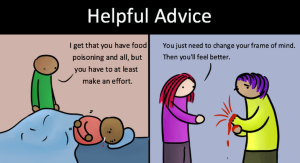
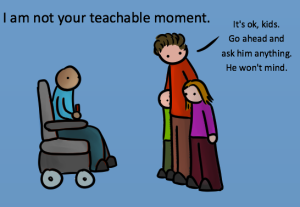
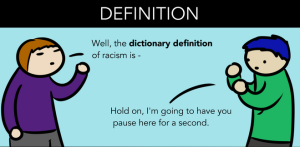
 March 31, 2015 / Sabah Choudrey
March 31, 2015 / Sabah Choudrey Originally published on xoJane and republished here with their permission.
I have a long history of hair removal.
It started when I was very young, too young maybe, but not for us brown girls, us hairy brown girls.
I was about 10 years old, I had a furry upper lip and the kids at school made fun of me.
They made fun of us brown hairy girls. I told my mother and she called the neighbor round, a brown girl, and she waxed it all off us, us hairy brown girls.
I have a long history of hair removal, but so does my sister, so does my mother, and so do her sisters. We’re Pakistani, from South Asia, and for a lot of us that means we are dark-haired and dark-skinned.
It’s just the way we are.
It’s not the way others want us to be.
From Western beauty standards to the male gaze, even from our mothers and sisters and fathers and brothers, we are told to remove our body hair, remove our facial hair, remove our pubic hair . . . .
Return to a pre-pubescent female body, and lighten your skin whilst you’re at it. They aren’t pretty, hairy brown girls.
I type into a Google search bar: “South Asian women hairy” and I find “XXX South Asian Hairy Girls” and other explicit titles navigating me to porn channels, with the occasional advertisement on hair removal and laser treatments.
Just in case being fetishized put you off.
Even though every three weeks my downy moustache ceased to exist, I never thought much of my hair when I was younger.
It grew across my forehead, with my hairline bleeding into my brows and down into my sideburns, thickening around my chin and upper lip.
My arms were covered in a coat of black hair, thickening on my forearms. My legs were the same, a noticeable dark fleece of fur.
That was the second to go.
I remember the day I found out my sister was shaving her legs — she had been doing it for a while. I was so upset with her.
It felt like she had kept this secret from me, and being the same age (we’re twins), I thought we were going to do everything together as hairy brown girls. I felt like she was growing into a woman before me, and I was left behind.
So I started shaving my legs.
I was 13. And I was the last girl in my year at school to do it.
It was a predominantly South Asian school. We were all united by hair, but, of course, you couldn’t tell.
I remember looking at our skinny brown legs during sports class, shivering in skirts whilst we played netball.
I remember listening to conversations about how long shaving our legs takes, how much hassle it is, where we missed a spot, and where we keep catching our ankles.
I remember talking with my best friends about shaving the bare minimum, which was about an inch above the knee, where our shorts and skirts sit, giving the illusion of completely hairless legs.
We called them “hair shorts” and we wore them with a forbidden kind of pride.
I knew I was always hairy. But my parents couldn’t accept that.
My mother wanted to remove it. My dad wanted to know why it was there in the first place.
I was still in secondary school and I had visited the GP countless times about my hair, having blood taken for hormone tests and testosterone checks, being asked about polycystic ovary syndrome (PCOS) and given the contraceptive pill when I wasn’t even old enough to be using it.
This was on top of being waxed, plucked, shaved, lasered, tweezed, and threaded.
Dad would point out the thickening chin hair on my face at a random point in the day and ask, “Does it bother you?”
Those questions bothered me more.
The truth is, there was nothing wrong with me. My hormone levels were fine. I didn’t have PCOS. And with regular and expensive hair removal treatments, my self esteem was doing okay.
As our family general practitioner, Dr. Sharma, said, “It’s just the way you are.”
It’s just the way us hairy brown girls are.
Fast forward with me five or so years and you’ll start to see the irony.
I had moved out of London and down to sunny and gay Brighton. I was out of my brown comfort zone, entering into a world which was predominantly white and privately racist.
I was forced to keep my hair removal a secret, knowing I wouldn’t find solidarity but shock, horror, and disgust.
It took several conversations for me to realize my true identity belonged under a trans-masculine umbrella, and I came to the realization that after years of avoiding and removing hair, I was going to have to embrace it.
It took me two years after I started using he/him/his pronouns to finally let the hair on my face grow. It was really hard.
Even though I presented as male, I couldn’t bring myself to let the hair on my face grow out.
It should have been an easy decision — I know many trans men who would jump at the chance to have a beard before a prescription.
But it symbolized the hairy brown girl I was for so long, reminding me I was un-pretty and unwanted. It was connected to so much pain.
The hair on my face didn’t represent masculinity at all. My beard wasn’t what made me a man.
I remember sitting with an endocrinologist in a private gender identity clinic, hoping for a prescription for testosterone.
I was hoping the appointment would be fast and easy but this doctor was very fixated on my facial hair.
He was white.
He presented me with a test, called the Ferriman-Gallwey Score. It’s a crude set of simple drawings of different parts of the body with varying degrees of hair. Its most practical use is evaluating hirsutism in women and diagnosing PCOS.
Here the patient is expected to point to which picture reflects their hair growth. Considering it is a Caucasian set of photos, none of the pictures reflected my hair growth, surprisingly.
I felt so much shame and fear, and I panicked. Was he taking into account cultural differences? Did he understand how totally flawed and rudimentary this test is?
I don’t think it would have mattered what score I ended up with. I was just a hairy brown girl so I shut my hairy brown mouth and left.
The question always comes up, “How long have you been on T for? What are you on?” And I feel a sudden panic to lie and make something up, make it up that I’m using testosterone.
I want to lie because I’m not using hormones and I don’t think I’m trans enough. I want to lie because I am so deeply embarrassed of the hairy brown girl in front of them.
I declare, “I’m not on hormones actually.”
And there’s a shift.
For a second, they see the hairy brown girl, they see her in the way the kids at school saw her. And then they come back with, “You’re so lucky. You pass so well. I’m so jealous of your beard.”
Without thinking about what it was like being a hairy brown girl, my hairy brown girl experience is erased.
No one sees my color. They just see my hair.
The comment always comes up, “You’re so brave, growing that out, I really respect that,” and I realize people see me as a girl with a beard.
Something hits me, and it’s painful.
For a second, they see the hairy brown girl. And I realize the lips those words came out belong to a face, and that face has white skin and thirsty eyes that are looking at me and flirting with me and undressing me.
“I’m a guy, I’m trans. I’m a trans guy.” I stutter, feeling a disappointment I can’t quite describe.
I’m reduced to a fetish Google knows very well.
No one sees my gender. And they just see my hair.
And I’m taken back to when I was a child. I was about 10 years old. I had a furry upper lip and the kids at school made fun of me.
They still make fun of us, hairy brown girls.
[do_widget id=”text-101″]
Sabah Choudrey is a Pakistani trans activist with a passion for his community. His tiny head is full of big ideas, having founded Trans Pride Brighton in 2012, the first trans march and trans celebration in the UK, the QTIPOC Brighton Network for queer, trans and intersex people of colour, and desiQ for queer South Asian people in London/South East area. Check out his website and follow him on Twitter @SabahChoudrey.





 March 31, 2015 / Sabah Choudrey
March 31, 2015 / Sabah Choudrey Originally published on xoJane and republished here with their permission.
I have a long history of hair removal.
It started when I was very young, too young maybe, but not for us brown girls, us hairy brown girls.
I was about 10 years old, I had a furry upper lip and the kids at school made fun of me.
They made fun of us brown hairy girls. I told my mother and she called the neighbor round, a brown girl, and she waxed it all off us, us hairy brown girls.
I have a long history of hair removal, but so does my sister, so does my mother, and so do her sisters. We’re Pakistani, from South Asia, and for a lot of us that means we are dark-haired and dark-skinned.
It’s just the way we are.
It’s not the way others want us to be.
From Western beauty standards to the male gaze, even from our mothers and sisters and fathers and brothers, we are told to remove our body hair, remove our facial hair, remove our pubic hair . . . .
Return to a pre-pubescent female body, and lighten your skin whilst you’re at it. They aren’t pretty, hairy brown girls.
I type into a Google search bar: “South Asian women hairy” and I find “XXX South Asian Hairy Girls” and other explicit titles navigating me to porn channels, with the occasional advertisement on hair removal and laser treatments.
Just in case being fetishized put you off.
Even though every three weeks my downy moustache ceased to exist, I never thought much of my hair when I was younger.
It grew across my forehead, with my hairline bleeding into my brows and down into my sideburns, thickening around my chin and upper lip.
My arms were covered in a coat of black hair, thickening on my forearms. My legs were the same, a noticeable dark fleece of fur.
That was the second to go.
I remember the day I found out my sister was shaving her legs — she had been doing it for a while. I was so upset with her.
It felt like she had kept this secret from me, and being the same age (we’re twins), I thought we were going to do everything together as hairy brown girls. I felt like she was growing into a woman before me, and I was left behind.
So I started shaving my legs.
I was 13. And I was the last girl in my year at school to do it.
It was a predominantly South Asian school. We were all united by hair, but, of course, you couldn’t tell.
I remember looking at our skinny brown legs during sports class, shivering in skirts whilst we played netball.
I remember listening to conversations about how long shaving our legs takes, how much hassle it is, where we missed a spot, and where we keep catching our ankles.
I remember talking with my best friends about shaving the bare minimum, which was about an inch above the knee, where our shorts and skirts sit, giving the illusion of completely hairless legs.
We called them “hair shorts” and we wore them with a forbidden kind of pride.
I knew I was always hairy. But my parents couldn’t accept that.
My mother wanted to remove it. My dad wanted to know why it was there in the first place.
I was still in secondary school and I had visited the GP countless times about my hair, having blood taken for hormone tests and testosterone checks, being asked about polycystic ovary syndrome (PCOS) and given the contraceptive pill when I wasn’t even old enough to be using it.
This was on top of being waxed, plucked, shaved, lasered, tweezed, and threaded.
Dad would point out the thickening chin hair on my face at a random point in the day and ask, “Does it bother you?”
Those questions bothered me more.
The truth is, there was nothing wrong with me. My hormone levels were fine. I didn’t have PCOS. And with regular and expensive hair removal treatments, my self esteem was doing okay.
As our family general practitioner, Dr. Sharma, said, “It’s just the way you are.”
It’s just the way us hairy brown girls are.
Fast forward with me five or so years and you’ll start to see the irony.
I had moved out of London and down to sunny and gay Brighton. I was out of my brown comfort zone, entering into a world which was predominantly white and privately racist.
I was forced to keep my hair removal a secret, knowing I wouldn’t find solidarity but shock, horror, and disgust.
It took several conversations for me to realize my true identity belonged under a trans-masculine umbrella, and I came to the realization that after years of avoiding and removing hair, I was going to have to embrace it.
It took me two years after I started using he/him/his pronouns to finally let the hair on my face grow. It was really hard.
Even though I presented as male, I couldn’t bring myself to let the hair on my face grow out.
It should have been an easy decision — I know many trans men who would jump at the chance to have a beard before a prescription.
But it symbolized the hairy brown girl I was for so long, reminding me I was un-pretty and unwanted. It was connected to so much pain.
The hair on my face didn’t represent masculinity at all. My beard wasn’t what made me a man.
I remember sitting with an endocrinologist in a private gender identity clinic, hoping for a prescription for testosterone.
I was hoping the appointment would be fast and easy but this doctor was very fixated on my facial hair.
He was white.
He presented me with a test, called the Ferriman-Gallwey Score. It’s a crude set of simple drawings of different parts of the body with varying degrees of hair. Its most practical use is evaluating hirsutism in women and diagnosing PCOS.
Here the patient is expected to point to which picture reflects their hair growth. Considering it is a Caucasian set of photos, none of the pictures reflected my hair growth, surprisingly.
I felt so much shame and fear, and I panicked. Was he taking into account cultural differences? Did he understand how totally flawed and rudimentary this test is?
I don’t think it would have mattered what score I ended up with. I was just a hairy brown girl so I shut my hairy brown mouth and left.
The question always comes up, “How long have you been on T for? What are you on?” And I feel a sudden panic to lie and make something up, make it up that I’m using testosterone.
I want to lie because I’m not using hormones and I don’t think I’m trans enough. I want to lie because I am so deeply embarrassed of the hairy brown girl in front of them.
I declare, “I’m not on hormones actually.”
And there’s a shift.
For a second, they see the hairy brown girl, they see her in the way the kids at school saw her. And then they come back with, “You’re so lucky. You pass so well. I’m so jealous of your beard.”
Without thinking about what it was like being a hairy brown girl, my hairy brown girl experience is erased.
No one sees my color. They just see my hair.
The comment always comes up, “You’re so brave, growing that out, I really respect that,” and I realize people see me as a girl with a beard.
Something hits me, and it’s painful.
For a second, they see the hairy brown girl. And I realize the lips those words came out belong to a face, and that face has white skin and thirsty eyes that are looking at me and flirting with me and undressing me.
“I’m a guy, I’m trans. I’m a trans guy.” I stutter, feeling a disappointment I can’t quite describe.
I’m reduced to a fetish Google knows very well.
No one sees my gender. And they just see my hair.
And I’m taken back to when I was a child. I was about 10 years old. I had a furry upper lip and the kids at school made fun of me.
They still make fun of us, hairy brown girls.
[do_widget id=”text-101″]
Sabah Choudrey is a Pakistani trans activist with a passion for his community. His tiny head is full of big ideas, having founded Trans Pride Brighton in 2012, the first trans march and trans celebration in the UK, the QTIPOC Brighton Network for queer, trans and intersex people of colour, and desiQ for queer South Asian people in London/South East area. Check out his website and follow him on Twitter @SabahChoudrey.


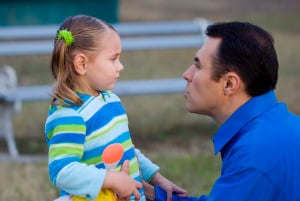

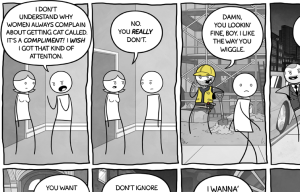

 March 31, 2015 / Sabah Choudrey
March 31, 2015 / Sabah Choudrey Originally published on xoJane and republished here with their permission.
I have a long history of hair removal.
It started when I was very young, too young maybe, but not for us brown girls, us hairy brown girls.
I was about 10 years old, I had a furry upper lip and the kids at school made fun of me.
They made fun of us brown hairy girls. I told my mother and she called the neighbor round, a brown girl, and she waxed it all off us, us hairy brown girls.
I have a long history of hair removal, but so does my sister, so does my mother, and so do her sisters. We’re Pakistani, from South Asia, and for a lot of us that means we are dark-haired and dark-skinned.
It’s just the way we are.
It’s not the way others want us to be.
From Western beauty standards to the male gaze, even from our mothers and sisters and fathers and brothers, we are told to remove our body hair, remove our facial hair, remove our pubic hair . . . .
Return to a pre-pubescent female body, and lighten your skin whilst you’re at it. They aren’t pretty, hairy brown girls.
I type into a Google search bar: “South Asian women hairy” and I find “XXX South Asian Hairy Girls” and other explicit titles navigating me to porn channels, with the occasional advertisement on hair removal and laser treatments.
Just in case being fetishized put you off.
Even though every three weeks my downy moustache ceased to exist, I never thought much of my hair when I was younger.
It grew across my forehead, with my hairline bleeding into my brows and down into my sideburns, thickening around my chin and upper lip.
My arms were covered in a coat of black hair, thickening on my forearms. My legs were the same, a noticeable dark fleece of fur.
That was the second to go.
I remember the day I found out my sister was shaving her legs — she had been doing it for a while. I was so upset with her.
It felt like she had kept this secret from me, and being the same age (we’re twins), I thought we were going to do everything together as hairy brown girls. I felt like she was growing into a woman before me, and I was left behind.
So I started shaving my legs.
I was 13. And I was the last girl in my year at school to do it.
It was a predominantly South Asian school. We were all united by hair, but, of course, you couldn’t tell.
I remember looking at our skinny brown legs during sports class, shivering in skirts whilst we played netball.
I remember listening to conversations about how long shaving our legs takes, how much hassle it is, where we missed a spot, and where we keep catching our ankles.
I remember talking with my best friends about shaving the bare minimum, which was about an inch above the knee, where our shorts and skirts sit, giving the illusion of completely hairless legs.
We called them “hair shorts” and we wore them with a forbidden kind of pride.
I knew I was always hairy. But my parents couldn’t accept that.
My mother wanted to remove it. My dad wanted to know why it was there in the first place.
I was still in secondary school and I had visited the GP countless times about my hair, having blood taken for hormone tests and testosterone checks, being asked about polycystic ovary syndrome (PCOS) and given the contraceptive pill when I wasn’t even old enough to be using it.
This was on top of being waxed, plucked, shaved, lasered, tweezed, and threaded.
Dad would point out the thickening chin hair on my face at a random point in the day and ask, “Does it bother you?”
Those questions bothered me more.
The truth is, there was nothing wrong with me. My hormone levels were fine. I didn’t have PCOS. And with regular and expensive hair removal treatments, my self esteem was doing okay.
As our family general practitioner, Dr. Sharma, said, “It’s just the way you are.”
It’s just the way us hairy brown girls are.
Fast forward with me five or so years and you’ll start to see the irony.
I had moved out of London and down to sunny and gay Brighton. I was out of my brown comfort zone, entering into a world which was predominantly white and privately racist.
I was forced to keep my hair removal a secret, knowing I wouldn’t find solidarity but shock, horror, and disgust.
It took several conversations for me to realize my true identity belonged under a trans-masculine umbrella, and I came to the realization that after years of avoiding and removing hair, I was going to have to embrace it.
It took me two years after I started using he/him/his pronouns to finally let the hair on my face grow. It was really hard.
Even though I presented as male, I couldn’t bring myself to let the hair on my face grow out.
It should have been an easy decision — I know many trans men who would jump at the chance to have a beard before a prescription.
But it symbolized the hairy brown girl I was for so long, reminding me I was un-pretty and unwanted. It was connected to so much pain.
The hair on my face didn’t represent masculinity at all. My beard wasn’t what made me a man.
I remember sitting with an endocrinologist in a private gender identity clinic, hoping for a prescription for testosterone.
I was hoping the appointment would be fast and easy but this doctor was very fixated on my facial hair.
He was white.
He presented me with a test, called the Ferriman-Gallwey Score. It’s a crude set of simple drawings of different parts of the body with varying degrees of hair. Its most practical use is evaluating hirsutism in women and diagnosing PCOS.
Here the patient is expected to point to which picture reflects their hair growth. Considering it is a Caucasian set of photos, none of the pictures reflected my hair growth, surprisingly.
I felt so much shame and fear, and I panicked. Was he taking into account cultural differences? Did he understand how totally flawed and rudimentary this test is?
I don’t think it would have mattered what score I ended up with. I was just a hairy brown girl so I shut my hairy brown mouth and left.
The question always comes up, “How long have you been on T for? What are you on?” And I feel a sudden panic to lie and make something up, make it up that I’m using testosterone.
I want to lie because I’m not using hormones and I don’t think I’m trans enough. I want to lie because I am so deeply embarrassed of the hairy brown girl in front of them.
I declare, “I’m not on hormones actually.”
And there’s a shift.
For a second, they see the hairy brown girl, they see her in the way the kids at school saw her. And then they come back with, “You’re so lucky. You pass so well. I’m so jealous of your beard.”
Without thinking about what it was like being a hairy brown girl, my hairy brown girl experience is erased.
No one sees my color. They just see my hair.
The comment always comes up, “You’re so brave, growing that out, I really respect that,” and I realize people see me as a girl with a beard.
Something hits me, and it’s painful.
For a second, they see the hairy brown girl. And I realize the lips those words came out belong to a face, and that face has white skin and thirsty eyes that are looking at me and flirting with me and undressing me.
“I’m a guy, I’m trans. I’m a trans guy.” I stutter, feeling a disappointment I can’t quite describe.
I’m reduced to a fetish Google knows very well.
No one sees my gender. And they just see my hair.
And I’m taken back to when I was a child. I was about 10 years old. I had a furry upper lip and the kids at school made fun of me.
They still make fun of us, hairy brown girls.
[do_widget id=”text-101″]
Sabah Choudrey is a Pakistani trans activist with a passion for his community. His tiny head is full of big ideas, having founded Trans Pride Brighton in 2012, the first trans march and trans celebration in the UK, the QTIPOC Brighton Network for queer, trans and intersex people of colour, and desiQ for queer South Asian people in London/South East area. Check out his website and follow him on Twitter @SabahChoudrey.

Posts navigation
← Signs Your Anti-Oppression Space Isn’t as Welcoming as You Think It Is (With 3 Steps to Make It Better)
Here’s a Breakdown of Some of the Sexist Sh*t American Women Have to Deal With Daily →
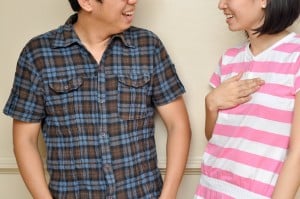
 March 31, 2015 / Sabah Choudrey
March 31, 2015 / Sabah Choudrey Originally published on xoJane and republished here with their permission.
I have a long history of hair removal.
It started when I was very young, too young maybe, but not for us brown girls, us hairy brown girls.
I was about 10 years old, I had a furry upper lip and the kids at school made fun of me.
They made fun of us brown hairy girls. I told my mother and she called the neighbor round, a brown girl, and she waxed it all off us, us hairy brown girls.
I have a long history of hair removal, but so does my sister, so does my mother, and so do her sisters. We’re Pakistani, from South Asia, and for a lot of us that means we are dark-haired and dark-skinned.
It’s just the way we are.
It’s not the way others want us to be.
From Western beauty standards to the male gaze, even from our mothers and sisters and fathers and brothers, we are told to remove our body hair, remove our facial hair, remove our pubic hair . . . .
Return to a pre-pubescent female body, and lighten your skin whilst you’re at it. They aren’t pretty, hairy brown girls.
I type into a Google search bar: “South Asian women hairy” and I find “XXX South Asian Hairy Girls” and other explicit titles navigating me to porn channels, with the occasional advertisement on hair removal and laser treatments.
Just in case being fetishized put you off.
Even though every three weeks my downy moustache ceased to exist, I never thought much of my hair when I was younger.
It grew across my forehead, with my hairline bleeding into my brows and down into my sideburns, thickening around my chin and upper lip.
My arms were covered in a coat of black hair, thickening on my forearms. My legs were the same, a noticeable dark fleece of fur.
That was the second to go.
I remember the day I found out my sister was shaving her legs — she had been doing it for a while. I was so upset with her.
It felt like she had kept this secret from me, and being the same age (we’re twins), I thought we were going to do everything together as hairy brown girls. I felt like she was growing into a woman before me, and I was left behind.
So I started shaving my legs.
I was 13. And I was the last girl in my year at school to do it.
It was a predominantly South Asian school. We were all united by hair, but, of course, you couldn’t tell.
I remember looking at our skinny brown legs during sports class, shivering in skirts whilst we played netball.
I remember listening to conversations about how long shaving our legs takes, how much hassle it is, where we missed a spot, and where we keep catching our ankles.
I remember talking with my best friends about shaving the bare minimum, which was about an inch above the knee, where our shorts and skirts sit, giving the illusion of completely hairless legs.
We called them “hair shorts” and we wore them with a forbidden kind of pride.
I knew I was always hairy. But my parents couldn’t accept that.
My mother wanted to remove it. My dad wanted to know why it was there in the first place.
I was still in secondary school and I had visited the GP countless times about my hair, having blood taken for hormone tests and testosterone checks, being asked about polycystic ovary syndrome (PCOS) and given the contraceptive pill when I wasn’t even old enough to be using it.
This was on top of being waxed, plucked, shaved, lasered, tweezed, and threaded.
Dad would point out the thickening chin hair on my face at a random point in the day and ask, “Does it bother you?”
Those questions bothered me more.
The truth is, there was nothing wrong with me. My hormone levels were fine. I didn’t have PCOS. And with regular and expensive hair removal treatments, my self esteem was doing okay.
As our family general practitioner, Dr. Sharma, said, “It’s just the way you are.”
It’s just the way us hairy brown girls are.
Fast forward with me five or so years and you’ll start to see the irony.
I had moved out of London and down to sunny and gay Brighton. I was out of my brown comfort zone, entering into a world which was predominantly white and privately racist.
I was forced to keep my hair removal a secret, knowing I wouldn’t find solidarity but shock, horror, and disgust.
It took several conversations for me to realize my true identity belonged under a trans-masculine umbrella, and I came to the realization that after years of avoiding and removing hair, I was going to have to embrace it.
It took me two years after I started using he/him/his pronouns to finally let the hair on my face grow. It was really hard.
Even though I presented as male, I couldn’t bring myself to let the hair on my face grow out.
It should have been an easy decision — I know many trans men who would jump at the chance to have a beard before a prescription.
But it symbolized the hairy brown girl I was for so long, reminding me I was un-pretty and unwanted. It was connected to so much pain.
The hair on my face didn’t represent masculinity at all. My beard wasn’t what made me a man.
I remember sitting with an endocrinologist in a private gender identity clinic, hoping for a prescription for testosterone.
I was hoping the appointment would be fast and easy but this doctor was very fixated on my facial hair.
He was white.
He presented me with a test, called the Ferriman-Gallwey Score. It’s a crude set of simple drawings of different parts of the body with varying degrees of hair. Its most practical use is evaluating hirsutism in women and diagnosing PCOS.
Here the patient is expected to point to which picture reflects their hair growth. Considering it is a Caucasian set of photos, none of the pictures reflected my hair growth, surprisingly.
I felt so much shame and fear, and I panicked. Was he taking into account cultural differences? Did he understand how totally flawed and rudimentary this test is?
I don’t think it would have mattered what score I ended up with. I was just a hairy brown girl so I shut my hairy brown mouth and left.
The question always comes up, “How long have you been on T for? What are you on?” And I feel a sudden panic to lie and make something up, make it up that I’m using testosterone.
I want to lie because I’m not using hormones and I don’t think I’m trans enough. I want to lie because I am so deeply embarrassed of the hairy brown girl in front of them.
I declare, “I’m not on hormones actually.”
And there’s a shift.
For a second, they see the hairy brown girl, they see her in the way the kids at school saw her. And then they come back with, “You’re so lucky. You pass so well. I’m so jealous of your beard.”
Without thinking about what it was like being a hairy brown girl, my hairy brown girl experience is erased.
No one sees my color. They just see my hair.
The comment always comes up, “You’re so brave, growing that out, I really respect that,” and I realize people see me as a girl with a beard.
Something hits me, and it’s painful.
For a second, they see the hairy brown girl. And I realize the lips those words came out belong to a face, and that face has white skin and thirsty eyes that are looking at me and flirting with me and undressing me.
“I’m a guy, I’m trans. I’m a trans guy.” I stutter, feeling a disappointment I can’t quite describe.
I’m reduced to a fetish Google knows very well.
No one sees my gender. And they just see my hair.
And I’m taken back to when I was a child. I was about 10 years old. I had a furry upper lip and the kids at school made fun of me.
They still make fun of us, hairy brown girls.
[do_widget id=”text-101″]
Sabah Choudrey is a Pakistani trans activist with a passion for his community. His tiny head is full of big ideas, having founded Trans Pride Brighton in 2012, the first trans march and trans celebration in the UK, the QTIPOC Brighton Network for queer, trans and intersex people of colour, and desiQ for queer South Asian people in London/South East area. Check out his website and follow him on Twitter @SabahChoudrey.


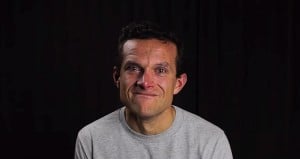


 March 31, 2015 / Sabah Choudrey
March 31, 2015 / Sabah Choudrey Originally published on xoJane and republished here with their permission.
I have a long history of hair removal.
It started when I was very young, too young maybe, but not for us brown girls, us hairy brown girls.
I was about 10 years old, I had a furry upper lip and the kids at school made fun of me.
They made fun of us brown hairy girls. I told my mother and she called the neighbor round, a brown girl, and she waxed it all off us, us hairy brown girls.
I have a long history of hair removal, but so does my sister, so does my mother, and so do her sisters. We’re Pakistani, from South Asia, and for a lot of us that means we are dark-haired and dark-skinned.
It’s just the way we are.
It’s not the way others want us to be.
From Western beauty standards to the male gaze, even from our mothers and sisters and fathers and brothers, we are told to remove our body hair, remove our facial hair, remove our pubic hair . . . .
Return to a pre-pubescent female body, and lighten your skin whilst you’re at it. They aren’t pretty, hairy brown girls.
I type into a Google search bar: “South Asian women hairy” and I find “XXX South Asian Hairy Girls” and other explicit titles navigating me to porn channels, with the occasional advertisement on hair removal and laser treatments.
Just in case being fetishized put you off.
Even though every three weeks my downy moustache ceased to exist, I never thought much of my hair when I was younger.
It grew across my forehead, with my hairline bleeding into my brows and down into my sideburns, thickening around my chin and upper lip.
My arms were covered in a coat of black hair, thickening on my forearms. My legs were the same, a noticeable dark fleece of fur.
That was the second to go.
I remember the day I found out my sister was shaving her legs — she had been doing it for a while. I was so upset with her.
It felt like she had kept this secret from me, and being the same age (we’re twins), I thought we were going to do everything together as hairy brown girls. I felt like she was growing into a woman before me, and I was left behind.
So I started shaving my legs.
I was 13. And I was the last girl in my year at school to do it.
It was a predominantly South Asian school. We were all united by hair, but, of course, you couldn’t tell.
I remember looking at our skinny brown legs during sports class, shivering in skirts whilst we played netball.
I remember listening to conversations about how long shaving our legs takes, how much hassle it is, where we missed a spot, and where we keep catching our ankles.
I remember talking with my best friends about shaving the bare minimum, which was about an inch above the knee, where our shorts and skirts sit, giving the illusion of completely hairless legs.
We called them “hair shorts” and we wore them with a forbidden kind of pride.
I knew I was always hairy. But my parents couldn’t accept that.
My mother wanted to remove it. My dad wanted to know why it was there in the first place.
I was still in secondary school and I had visited the GP countless times about my hair, having blood taken for hormone tests and testosterone checks, being asked about polycystic ovary syndrome (PCOS) and given the contraceptive pill when I wasn’t even old enough to be using it.
This was on top of being waxed, plucked, shaved, lasered, tweezed, and threaded.
Dad would point out the thickening chin hair on my face at a random point in the day and ask, “Does it bother you?”
Those questions bothered me more.
The truth is, there was nothing wrong with me. My hormone levels were fine. I didn’t have PCOS. And with regular and expensive hair removal treatments, my self esteem was doing okay.
As our family general practitioner, Dr. Sharma, said, “It’s just the way you are.”
It’s just the way us hairy brown girls are.
Fast forward with me five or so years and you’ll start to see the irony.
I had moved out of London and down to sunny and gay Brighton. I was out of my brown comfort zone, entering into a world which was predominantly white and privately racist.
I was forced to keep my hair removal a secret, knowing I wouldn’t find solidarity but shock, horror, and disgust.
It took several conversations for me to realize my true identity belonged under a trans-masculine umbrella, and I came to the realization that after years of avoiding and removing hair, I was going to have to embrace it.
It took me two years after I started using he/him/his pronouns to finally let the hair on my face grow. It was really hard.
Even though I presented as male, I couldn’t bring myself to let the hair on my face grow out.
It should have been an easy decision — I know many trans men who would jump at the chance to have a beard before a prescription.
But it symbolized the hairy brown girl I was for so long, reminding me I was un-pretty and unwanted. It was connected to so much pain.
The hair on my face didn’t represent masculinity at all. My beard wasn’t what made me a man.
I remember sitting with an endocrinologist in a private gender identity clinic, hoping for a prescription for testosterone.
I was hoping the appointment would be fast and easy but this doctor was very fixated on my facial hair.
He was white.
He presented me with a test, called the Ferriman-Gallwey Score. It’s a crude set of simple drawings of different parts of the body with varying degrees of hair. Its most practical use is evaluating hirsutism in women and diagnosing PCOS.
Here the patient is expected to point to which picture reflects their hair growth. Considering it is a Caucasian set of photos, none of the pictures reflected my hair growth, surprisingly.
I felt so much shame and fear, and I panicked. Was he taking into account cultural differences? Did he understand how totally flawed and rudimentary this test is?
I don’t think it would have mattered what score I ended up with. I was just a hairy brown girl so I shut my hairy brown mouth and left.
The question always comes up, “How long have you been on T for? What are you on?” And I feel a sudden panic to lie and make something up, make it up that I’m using testosterone.
I want to lie because I’m not using hormones and I don’t think I’m trans enough. I want to lie because I am so deeply embarrassed of the hairy brown girl in front of them.
I declare, “I’m not on hormones actually.”
And there’s a shift.
For a second, they see the hairy brown girl, they see her in the way the kids at school saw her. And then they come back with, “You’re so lucky. You pass so well. I’m so jealous of your beard.”
Without thinking about what it was like being a hairy brown girl, my hairy brown girl experience is erased.
No one sees my color. They just see my hair.
The comment always comes up, “You’re so brave, growing that out, I really respect that,” and I realize people see me as a girl with a beard.
Something hits me, and it’s painful.
For a second, they see the hairy brown girl. And I realize the lips those words came out belong to a face, and that face has white skin and thirsty eyes that are looking at me and flirting with me and undressing me.
“I’m a guy, I’m trans. I’m a trans guy.” I stutter, feeling a disappointment I can’t quite describe.
I’m reduced to a fetish Google knows very well.
No one sees my gender. And they just see my hair.
And I’m taken back to when I was a child. I was about 10 years old. I had a furry upper lip and the kids at school made fun of me.
They still make fun of us, hairy brown girls.
[do_widget id=”text-101″]
Sabah Choudrey is a Pakistani trans activist with a passion for his community. His tiny head is full of big ideas, having founded Trans Pride Brighton in 2012, the first trans march and trans celebration in the UK, the QTIPOC Brighton Network for queer, trans and intersex people of colour, and desiQ for queer South Asian people in London/South East area. Check out his website and follow him on Twitter @SabahChoudrey.



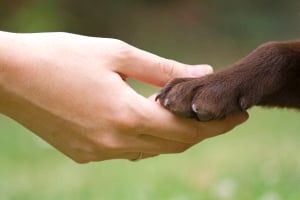
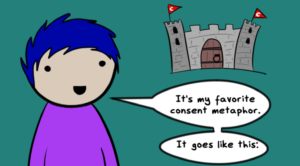
 March 31, 2015 / Sabah Choudrey
March 31, 2015 / Sabah Choudrey Originally published on xoJane and republished here with their permission.
I have a long history of hair removal.
It started when I was very young, too young maybe, but not for us brown girls, us hairy brown girls.
I was about 10 years old, I had a furry upper lip and the kids at school made fun of me.
They made fun of us brown hairy girls. I told my mother and she called the neighbor round, a brown girl, and she waxed it all off us, us hairy brown girls.
I have a long history of hair removal, but so does my sister, so does my mother, and so do her sisters. We’re Pakistani, from South Asia, and for a lot of us that means we are dark-haired and dark-skinned.
It’s just the way we are.
It’s not the way others want us to be.
From Western beauty standards to the male gaze, even from our mothers and sisters and fathers and brothers, we are told to remove our body hair, remove our facial hair, remove our pubic hair . . . .
Return to a pre-pubescent female body, and lighten your skin whilst you’re at it. They aren’t pretty, hairy brown girls.
I type into a Google search bar: “South Asian women hairy” and I find “XXX South Asian Hairy Girls” and other explicit titles navigating me to porn channels, with the occasional advertisement on hair removal and laser treatments.
Just in case being fetishized put you off.
Even though every three weeks my downy moustache ceased to exist, I never thought much of my hair when I was younger.
It grew across my forehead, with my hairline bleeding into my brows and down into my sideburns, thickening around my chin and upper lip.
My arms were covered in a coat of black hair, thickening on my forearms. My legs were the same, a noticeable dark fleece of fur.
That was the second to go.
I remember the day I found out my sister was shaving her legs — she had been doing it for a while. I was so upset with her.
It felt like she had kept this secret from me, and being the same age (we’re twins), I thought we were going to do everything together as hairy brown girls. I felt like she was growing into a woman before me, and I was left behind.
So I started shaving my legs.
I was 13. And I was the last girl in my year at school to do it.
It was a predominantly South Asian school. We were all united by hair, but, of course, you couldn’t tell.
I remember looking at our skinny brown legs during sports class, shivering in skirts whilst we played netball.
I remember listening to conversations about how long shaving our legs takes, how much hassle it is, where we missed a spot, and where we keep catching our ankles.
I remember talking with my best friends about shaving the bare minimum, which was about an inch above the knee, where our shorts and skirts sit, giving the illusion of completely hairless legs.
We called them “hair shorts” and we wore them with a forbidden kind of pride.
I knew I was always hairy. But my parents couldn’t accept that.
My mother wanted to remove it. My dad wanted to know why it was there in the first place.
I was still in secondary school and I had visited the GP countless times about my hair, having blood taken for hormone tests and testosterone checks, being asked about polycystic ovary syndrome (PCOS) and given the contraceptive pill when I wasn’t even old enough to be using it.
This was on top of being waxed, plucked, shaved, lasered, tweezed, and threaded.
Dad would point out the thickening chin hair on my face at a random point in the day and ask, “Does it bother you?”
Those questions bothered me more.
The truth is, there was nothing wrong with me. My hormone levels were fine. I didn’t have PCOS. And with regular and expensive hair removal treatments, my self esteem was doing okay.
As our family general practitioner, Dr. Sharma, said, “It’s just the way you are.”
It’s just the way us hairy brown girls are.
Fast forward with me five or so years and you’ll start to see the irony.
I had moved out of London and down to sunny and gay Brighton. I was out of my brown comfort zone, entering into a world which was predominantly white and privately racist.
I was forced to keep my hair removal a secret, knowing I wouldn’t find solidarity but shock, horror, and disgust.
It took several conversations for me to realize my true identity belonged under a trans-masculine umbrella, and I came to the realization that after years of avoiding and removing hair, I was going to have to embrace it.
It took me two years after I started using he/him/his pronouns to finally let the hair on my face grow. It was really hard.
Even though I presented as male, I couldn’t bring myself to let the hair on my face grow out.
It should have been an easy decision — I know many trans men who would jump at the chance to have a beard before a prescription.
But it symbolized the hairy brown girl I was for so long, reminding me I was un-pretty and unwanted. It was connected to so much pain.
The hair on my face didn’t represent masculinity at all. My beard wasn’t what made me a man.
I remember sitting with an endocrinologist in a private gender identity clinic, hoping for a prescription for testosterone.
I was hoping the appointment would be fast and easy but this doctor was very fixated on my facial hair.
He was white.
He presented me with a test, called the Ferriman-Gallwey Score. It’s a crude set of simple drawings of different parts of the body with varying degrees of hair. Its most practical use is evaluating hirsutism in women and diagnosing PCOS.
Here the patient is expected to point to which picture reflects their hair growth. Considering it is a Caucasian set of photos, none of the pictures reflected my hair growth, surprisingly.
I felt so much shame and fear, and I panicked. Was he taking into account cultural differences? Did he understand how totally flawed and rudimentary this test is?
I don’t think it would have mattered what score I ended up with. I was just a hairy brown girl so I shut my hairy brown mouth and left.
The question always comes up, “How long have you been on T for? What are you on?” And I feel a sudden panic to lie and make something up, make it up that I’m using testosterone.
I want to lie because I’m not using hormones and I don’t think I’m trans enough. I want to lie because I am so deeply embarrassed of the hairy brown girl in front of them.
I declare, “I’m not on hormones actually.”
And there’s a shift.
For a second, they see the hairy brown girl, they see her in the way the kids at school saw her. And then they come back with, “You’re so lucky. You pass so well. I’m so jealous of your beard.”
Without thinking about what it was like being a hairy brown girl, my hairy brown girl experience is erased.
No one sees my color. They just see my hair.
The comment always comes up, “You’re so brave, growing that out, I really respect that,” and I realize people see me as a girl with a beard.
Something hits me, and it’s painful.
For a second, they see the hairy brown girl. And I realize the lips those words came out belong to a face, and that face has white skin and thirsty eyes that are looking at me and flirting with me and undressing me.
“I’m a guy, I’m trans. I’m a trans guy.” I stutter, feeling a disappointment I can’t quite describe.
I’m reduced to a fetish Google knows very well.
No one sees my gender. And they just see my hair.
And I’m taken back to when I was a child. I was about 10 years old. I had a furry upper lip and the kids at school made fun of me.
They still make fun of us, hairy brown girls.
[do_widget id=”text-101″]
Sabah Choudrey is a Pakistani trans activist with a passion for his community. His tiny head is full of big ideas, having founded Trans Pride Brighton in 2012, the first trans march and trans celebration in the UK, the QTIPOC Brighton Network for queer, trans and intersex people of colour, and desiQ for queer South Asian people in London/South East area. Check out his website and follow him on Twitter @SabahChoudrey.


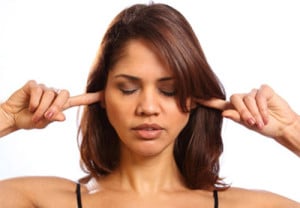
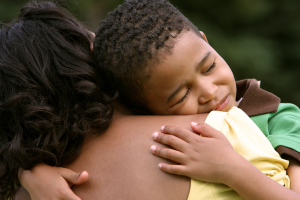
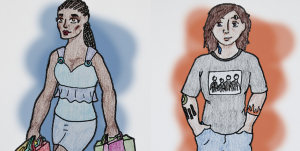
 March 31, 2015 / Sabah Choudrey
March 31, 2015 / Sabah Choudrey Originally published on xoJane and republished here with their permission.
I have a long history of hair removal.
It started when I was very young, too young maybe, but not for us brown girls, us hairy brown girls.
I was about 10 years old, I had a furry upper lip and the kids at school made fun of me.
They made fun of us brown hairy girls. I told my mother and she called the neighbor round, a brown girl, and she waxed it all off us, us hairy brown girls.
I have a long history of hair removal, but so does my sister, so does my mother, and so do her sisters. We’re Pakistani, from South Asia, and for a lot of us that means we are dark-haired and dark-skinned.
It’s just the way we are.
It’s not the way others want us to be.
From Western beauty standards to the male gaze, even from our mothers and sisters and fathers and brothers, we are told to remove our body hair, remove our facial hair, remove our pubic hair . . . .
Return to a pre-pubescent female body, and lighten your skin whilst you’re at it. They aren’t pretty, hairy brown girls.
I type into a Google search bar: “South Asian women hairy” and I find “XXX South Asian Hairy Girls” and other explicit titles navigating me to porn channels, with the occasional advertisement on hair removal and laser treatments.
Just in case being fetishized put you off.
Even though every three weeks my downy moustache ceased to exist, I never thought much of my hair when I was younger.
It grew across my forehead, with my hairline bleeding into my brows and down into my sideburns, thickening around my chin and upper lip.
My arms were covered in a coat of black hair, thickening on my forearms. My legs were the same, a noticeable dark fleece of fur.
That was the second to go.
I remember the day I found out my sister was shaving her legs — she had been doing it for a while. I was so upset with her.
It felt like she had kept this secret from me, and being the same age (we’re twins), I thought we were going to do everything together as hairy brown girls. I felt like she was growing into a woman before me, and I was left behind.
So I started shaving my legs.
I was 13. And I was the last girl in my year at school to do it.
It was a predominantly South Asian school. We were all united by hair, but, of course, you couldn’t tell.
I remember looking at our skinny brown legs during sports class, shivering in skirts whilst we played netball.
I remember listening to conversations about how long shaving our legs takes, how much hassle it is, where we missed a spot, and where we keep catching our ankles.
I remember talking with my best friends about shaving the bare minimum, which was about an inch above the knee, where our shorts and skirts sit, giving the illusion of completely hairless legs.
We called them “hair shorts” and we wore them with a forbidden kind of pride.
I knew I was always hairy. But my parents couldn’t accept that.
My mother wanted to remove it. My dad wanted to know why it was there in the first place.
I was still in secondary school and I had visited the GP countless times about my hair, having blood taken for hormone tests and testosterone checks, being asked about polycystic ovary syndrome (PCOS) and given the contraceptive pill when I wasn’t even old enough to be using it.
This was on top of being waxed, plucked, shaved, lasered, tweezed, and threaded.
Dad would point out the thickening chin hair on my face at a random point in the day and ask, “Does it bother you?”
Those questions bothered me more.
The truth is, there was nothing wrong with me. My hormone levels were fine. I didn’t have PCOS. And with regular and expensive hair removal treatments, my self esteem was doing okay.
As our family general practitioner, Dr. Sharma, said, “It’s just the way you are.”
It’s just the way us hairy brown girls are.
Fast forward with me five or so years and you’ll start to see the irony.
I had moved out of London and down to sunny and gay Brighton. I was out of my brown comfort zone, entering into a world which was predominantly white and privately racist.
I was forced to keep my hair removal a secret, knowing I wouldn’t find solidarity but shock, horror, and disgust.
It took several conversations for me to realize my true identity belonged under a trans-masculine umbrella, and I came to the realization that after years of avoiding and removing hair, I was going to have to embrace it.
It took me two years after I started using he/him/his pronouns to finally let the hair on my face grow. It was really hard.
Even though I presented as male, I couldn’t bring myself to let the hair on my face grow out.
It should have been an easy decision — I know many trans men who would jump at the chance to have a beard before a prescription.
But it symbolized the hairy brown girl I was for so long, reminding me I was un-pretty and unwanted. It was connected to so much pain.
The hair on my face didn’t represent masculinity at all. My beard wasn’t what made me a man.
I remember sitting with an endocrinologist in a private gender identity clinic, hoping for a prescription for testosterone.
I was hoping the appointment would be fast and easy but this doctor was very fixated on my facial hair.
He was white.
He presented me with a test, called the Ferriman-Gallwey Score. It’s a crude set of simple drawings of different parts of the body with varying degrees of hair. Its most practical use is evaluating hirsutism in women and diagnosing PCOS.
Here the patient is expected to point to which picture reflects their hair growth. Considering it is a Caucasian set of photos, none of the pictures reflected my hair growth, surprisingly.
I felt so much shame and fear, and I panicked. Was he taking into account cultural differences? Did he understand how totally flawed and rudimentary this test is?
I don’t think it would have mattered what score I ended up with. I was just a hairy brown girl so I shut my hairy brown mouth and left.
The question always comes up, “How long have you been on T for? What are you on?” And I feel a sudden panic to lie and make something up, make it up that I’m using testosterone.
I want to lie because I’m not using hormones and I don’t think I’m trans enough. I want to lie because I am so deeply embarrassed of the hairy brown girl in front of them.
I declare, “I’m not on hormones actually.”
And there’s a shift.
For a second, they see the hairy brown girl, they see her in the way the kids at school saw her. And then they come back with, “You’re so lucky. You pass so well. I’m so jealous of your beard.”
Without thinking about what it was like being a hairy brown girl, my hairy brown girl experience is erased.
No one sees my color. They just see my hair.
The comment always comes up, “You’re so brave, growing that out, I really respect that,” and I realize people see me as a girl with a beard.
Something hits me, and it’s painful.
For a second, they see the hairy brown girl. And I realize the lips those words came out belong to a face, and that face has white skin and thirsty eyes that are looking at me and flirting with me and undressing me.
“I’m a guy, I’m trans. I’m a trans guy.” I stutter, feeling a disappointment I can’t quite describe.
I’m reduced to a fetish Google knows very well.
No one sees my gender. And they just see my hair.
And I’m taken back to when I was a child. I was about 10 years old. I had a furry upper lip and the kids at school made fun of me.
They still make fun of us, hairy brown girls.
[do_widget id=”text-101″]
Sabah Choudrey is a Pakistani trans activist with a passion for his community. His tiny head is full of big ideas, having founded Trans Pride Brighton in 2012, the first trans march and trans celebration in the UK, the QTIPOC Brighton Network for queer, trans and intersex people of colour, and desiQ for queer South Asian people in London/South East area. Check out his website and follow him on Twitter @SabahChoudrey.



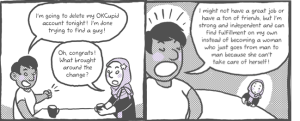
 March 31, 2015 / Sabah Choudrey
March 31, 2015 / Sabah Choudrey Originally published on xoJane and republished here with their permission.
I have a long history of hair removal.
It started when I was very young, too young maybe, but not for us brown girls, us hairy brown girls.
I was about 10 years old, I had a furry upper lip and the kids at school made fun of me.
They made fun of us brown hairy girls. I told my mother and she called the neighbor round, a brown girl, and she waxed it all off us, us hairy brown girls.
I have a long history of hair removal, but so does my sister, so does my mother, and so do her sisters. We’re Pakistani, from South Asia, and for a lot of us that means we are dark-haired and dark-skinned.
It’s just the way we are.
It’s not the way others want us to be.
From Western beauty standards to the male gaze, even from our mothers and sisters and fathers and brothers, we are told to remove our body hair, remove our facial hair, remove our pubic hair . . . .
Return to a pre-pubescent female body, and lighten your skin whilst you’re at it. They aren’t pretty, hairy brown girls.
I type into a Google search bar: “South Asian women hairy” and I find “XXX South Asian Hairy Girls” and other explicit titles navigating me to porn channels, with the occasional advertisement on hair removal and laser treatments.
Just in case being fetishized put you off.
Even though every three weeks my downy moustache ceased to exist, I never thought much of my hair when I was younger.
It grew across my forehead, with my hairline bleeding into my brows and down into my sideburns, thickening around my chin and upper lip.
My arms were covered in a coat of black hair, thickening on my forearms. My legs were the same, a noticeable dark fleece of fur.
That was the second to go.
I remember the day I found out my sister was shaving her legs — she had been doing it for a while. I was so upset with her.
It felt like she had kept this secret from me, and being the same age (we’re twins), I thought we were going to do everything together as hairy brown girls. I felt like she was growing into a woman before me, and I was left behind.
So I started shaving my legs.
I was 13. And I was the last girl in my year at school to do it.
It was a predominantly South Asian school. We were all united by hair, but, of course, you couldn’t tell.
I remember looking at our skinny brown legs during sports class, shivering in skirts whilst we played netball.
I remember listening to conversations about how long shaving our legs takes, how much hassle it is, where we missed a spot, and where we keep catching our ankles.
I remember talking with my best friends about shaving the bare minimum, which was about an inch above the knee, where our shorts and skirts sit, giving the illusion of completely hairless legs.
We called them “hair shorts” and we wore them with a forbidden kind of pride.
I knew I was always hairy. But my parents couldn’t accept that.
My mother wanted to remove it. My dad wanted to know why it was there in the first place.
I was still in secondary school and I had visited the GP countless times about my hair, having blood taken for hormone tests and testosterone checks, being asked about polycystic ovary syndrome (PCOS) and given the contraceptive pill when I wasn’t even old enough to be using it.
This was on top of being waxed, plucked, shaved, lasered, tweezed, and threaded.
Dad would point out the thickening chin hair on my face at a random point in the day and ask, “Does it bother you?”
Those questions bothered me more.
The truth is, there was nothing wrong with me. My hormone levels were fine. I didn’t have PCOS. And with regular and expensive hair removal treatments, my self esteem was doing okay.
As our family general practitioner, Dr. Sharma, said, “It’s just the way you are.”
It’s just the way us hairy brown girls are.
Fast forward with me five or so years and you’ll start to see the irony.
I had moved out of London and down to sunny and gay Brighton. I was out of my brown comfort zone, entering into a world which was predominantly white and privately racist.
I was forced to keep my hair removal a secret, knowing I wouldn’t find solidarity but shock, horror, and disgust.
It took several conversations for me to realize my true identity belonged under a trans-masculine umbrella, and I came to the realization that after years of avoiding and removing hair, I was going to have to embrace it.
It took me two years after I started using he/him/his pronouns to finally let the hair on my face grow. It was really hard.
Even though I presented as male, I couldn’t bring myself to let the hair on my face grow out.
It should have been an easy decision — I know many trans men who would jump at the chance to have a beard before a prescription.
But it symbolized the hairy brown girl I was for so long, reminding me I was un-pretty and unwanted. It was connected to so much pain.
The hair on my face didn’t represent masculinity at all. My beard wasn’t what made me a man.
I remember sitting with an endocrinologist in a private gender identity clinic, hoping for a prescription for testosterone.
I was hoping the appointment would be fast and easy but this doctor was very fixated on my facial hair.
He was white.
He presented me with a test, called the Ferriman-Gallwey Score. It’s a crude set of simple drawings of different parts of the body with varying degrees of hair. Its most practical use is evaluating hirsutism in women and diagnosing PCOS.
Here the patient is expected to point to which picture reflects their hair growth. Considering it is a Caucasian set of photos, none of the pictures reflected my hair growth, surprisingly.
I felt so much shame and fear, and I panicked. Was he taking into account cultural differences? Did he understand how totally flawed and rudimentary this test is?
I don’t think it would have mattered what score I ended up with. I was just a hairy brown girl so I shut my hairy brown mouth and left.
The question always comes up, “How long have you been on T for? What are you on?” And I feel a sudden panic to lie and make something up, make it up that I’m using testosterone.
I want to lie because I’m not using hormones and I don’t think I’m trans enough. I want to lie because I am so deeply embarrassed of the hairy brown girl in front of them.
I declare, “I’m not on hormones actually.”
And there’s a shift.
For a second, they see the hairy brown girl, they see her in the way the kids at school saw her. And then they come back with, “You’re so lucky. You pass so well. I’m so jealous of your beard.”
Without thinking about what it was like being a hairy brown girl, my hairy brown girl experience is erased.
No one sees my color. They just see my hair.
The comment always comes up, “You’re so brave, growing that out, I really respect that,” and I realize people see me as a girl with a beard.
Something hits me, and it’s painful.
For a second, they see the hairy brown girl. And I realize the lips those words came out belong to a face, and that face has white skin and thirsty eyes that are looking at me and flirting with me and undressing me.
“I’m a guy, I’m trans. I’m a trans guy.” I stutter, feeling a disappointment I can’t quite describe.
I’m reduced to a fetish Google knows very well.
No one sees my gender. And they just see my hair.
And I’m taken back to when I was a child. I was about 10 years old. I had a furry upper lip and the kids at school made fun of me.
They still make fun of us, hairy brown girls.
[do_widget id=”text-101″]
Sabah Choudrey is a Pakistani trans activist with a passion for his community. His tiny head is full of big ideas, having founded Trans Pride Brighton in 2012, the first trans march and trans celebration in the UK, the QTIPOC Brighton Network for queer, trans and intersex people of colour, and desiQ for queer South Asian people in London/South East area. Check out his website and follow him on Twitter @SabahChoudrey.




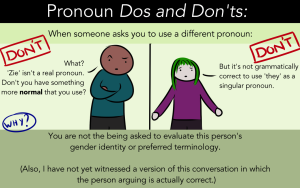
 March 31, 2015 / Sabah Choudrey
March 31, 2015 / Sabah Choudrey Originally published on xoJane and republished here with their permission.
I have a long history of hair removal.
It started when I was very young, too young maybe, but not for us brown girls, us hairy brown girls.
I was about 10 years old, I had a furry upper lip and the kids at school made fun of me.
They made fun of us brown hairy girls. I told my mother and she called the neighbor round, a brown girl, and she waxed it all off us, us hairy brown girls.
I have a long history of hair removal, but so does my sister, so does my mother, and so do her sisters. We’re Pakistani, from South Asia, and for a lot of us that means we are dark-haired and dark-skinned.
It’s just the way we are.
It’s not the way others want us to be.
From Western beauty standards to the male gaze, even from our mothers and sisters and fathers and brothers, we are told to remove our body hair, remove our facial hair, remove our pubic hair . . . .
Return to a pre-pubescent female body, and lighten your skin whilst you’re at it. They aren’t pretty, hairy brown girls.
I type into a Google search bar: “South Asian women hairy” and I find “XXX South Asian Hairy Girls” and other explicit titles navigating me to porn channels, with the occasional advertisement on hair removal and laser treatments.
Just in case being fetishized put you off.
Even though every three weeks my downy moustache ceased to exist, I never thought much of my hair when I was younger.
It grew across my forehead, with my hairline bleeding into my brows and down into my sideburns, thickening around my chin and upper lip.
My arms were covered in a coat of black hair, thickening on my forearms. My legs were the same, a noticeable dark fleece of fur.
That was the second to go.
I remember the day I found out my sister was shaving her legs — she had been doing it for a while. I was so upset with her.
It felt like she had kept this secret from me, and being the same age (we’re twins), I thought we were going to do everything together as hairy brown girls. I felt like she was growing into a woman before me, and I was left behind.
So I started shaving my legs.
I was 13. And I was the last girl in my year at school to do it.
It was a predominantly South Asian school. We were all united by hair, but, of course, you couldn’t tell.
I remember looking at our skinny brown legs during sports class, shivering in skirts whilst we played netball.
I remember listening to conversations about how long shaving our legs takes, how much hassle it is, where we missed a spot, and where we keep catching our ankles.
I remember talking with my best friends about shaving the bare minimum, which was about an inch above the knee, where our shorts and skirts sit, giving the illusion of completely hairless legs.
We called them “hair shorts” and we wore them with a forbidden kind of pride.
I knew I was always hairy. But my parents couldn’t accept that.
My mother wanted to remove it. My dad wanted to know why it was there in the first place.
I was still in secondary school and I had visited the GP countless times about my hair, having blood taken for hormone tests and testosterone checks, being asked about polycystic ovary syndrome (PCOS) and given the contraceptive pill when I wasn’t even old enough to be using it.
This was on top of being waxed, plucked, shaved, lasered, tweezed, and threaded.
Dad would point out the thickening chin hair on my face at a random point in the day and ask, “Does it bother you?”
Those questions bothered me more.
The truth is, there was nothing wrong with me. My hormone levels were fine. I didn’t have PCOS. And with regular and expensive hair removal treatments, my self esteem was doing okay.
As our family general practitioner, Dr. Sharma, said, “It’s just the way you are.”
It’s just the way us hairy brown girls are.
Fast forward with me five or so years and you’ll start to see the irony.
I had moved out of London and down to sunny and gay Brighton. I was out of my brown comfort zone, entering into a world which was predominantly white and privately racist.
I was forced to keep my hair removal a secret, knowing I wouldn’t find solidarity but shock, horror, and disgust.
It took several conversations for me to realize my true identity belonged under a trans-masculine umbrella, and I came to the realization that after years of avoiding and removing hair, I was going to have to embrace it.
It took me two years after I started using he/him/his pronouns to finally let the hair on my face grow. It was really hard.
Even though I presented as male, I couldn’t bring myself to let the hair on my face grow out.
It should have been an easy decision — I know many trans men who would jump at the chance to have a beard before a prescription.
But it symbolized the hairy brown girl I was for so long, reminding me I was un-pretty and unwanted. It was connected to so much pain.
The hair on my face didn’t represent masculinity at all. My beard wasn’t what made me a man.
I remember sitting with an endocrinologist in a private gender identity clinic, hoping for a prescription for testosterone.
I was hoping the appointment would be fast and easy but this doctor was very fixated on my facial hair.
He was white.
He presented me with a test, called the Ferriman-Gallwey Score. It’s a crude set of simple drawings of different parts of the body with varying degrees of hair. Its most practical use is evaluating hirsutism in women and diagnosing PCOS.
Here the patient is expected to point to which picture reflects their hair growth. Considering it is a Caucasian set of photos, none of the pictures reflected my hair growth, surprisingly.
I felt so much shame and fear, and I panicked. Was he taking into account cultural differences? Did he understand how totally flawed and rudimentary this test is?
I don’t think it would have mattered what score I ended up with. I was just a hairy brown girl so I shut my hairy brown mouth and left.
The question always comes up, “How long have you been on T for? What are you on?” And I feel a sudden panic to lie and make something up, make it up that I’m using testosterone.
I want to lie because I’m not using hormones and I don’t think I’m trans enough. I want to lie because I am so deeply embarrassed of the hairy brown girl in front of them.
I declare, “I’m not on hormones actually.”
And there’s a shift.
For a second, they see the hairy brown girl, they see her in the way the kids at school saw her. And then they come back with, “You’re so lucky. You pass so well. I’m so jealous of your beard.”
Without thinking about what it was like being a hairy brown girl, my hairy brown girl experience is erased.
No one sees my color. They just see my hair.
The comment always comes up, “You’re so brave, growing that out, I really respect that,” and I realize people see me as a girl with a beard.
Something hits me, and it’s painful.
For a second, they see the hairy brown girl. And I realize the lips those words came out belong to a face, and that face has white skin and thirsty eyes that are looking at me and flirting with me and undressing me.
“I’m a guy, I’m trans. I’m a trans guy.” I stutter, feeling a disappointment I can’t quite describe.
I’m reduced to a fetish Google knows very well.
No one sees my gender. And they just see my hair.
And I’m taken back to when I was a child. I was about 10 years old. I had a furry upper lip and the kids at school made fun of me.
They still make fun of us, hairy brown girls.
[do_widget id=”text-101″]
Sabah Choudrey is a Pakistani trans activist with a passion for his community. His tiny head is full of big ideas, having founded Trans Pride Brighton in 2012, the first trans march and trans celebration in the UK, the QTIPOC Brighton Network for queer, trans and intersex people of colour, and desiQ for queer South Asian people in London/South East area. Check out his website and follow him on Twitter @SabahChoudrey.


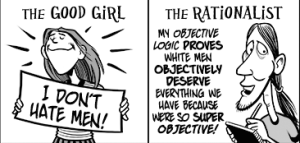
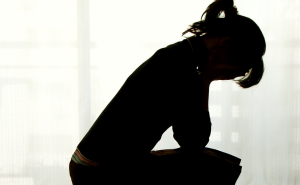
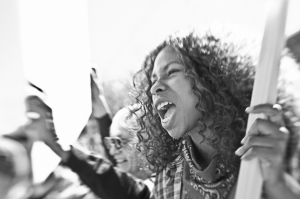
 March 31, 2015 / Sabah Choudrey
March 31, 2015 / Sabah Choudrey Originally published on xoJane and republished here with their permission.
I have a long history of hair removal.
It started when I was very young, too young maybe, but not for us brown girls, us hairy brown girls.
I was about 10 years old, I had a furry upper lip and the kids at school made fun of me.
They made fun of us brown hairy girls. I told my mother and she called the neighbor round, a brown girl, and she waxed it all off us, us hairy brown girls.
I have a long history of hair removal, but so does my sister, so does my mother, and so do her sisters. We’re Pakistani, from South Asia, and for a lot of us that means we are dark-haired and dark-skinned.
It’s just the way we are.
It’s not the way others want us to be.
From Western beauty standards to the male gaze, even from our mothers and sisters and fathers and brothers, we are told to remove our body hair, remove our facial hair, remove our pubic hair . . . .
Return to a pre-pubescent female body, and lighten your skin whilst you’re at it. They aren’t pretty, hairy brown girls.
I type into a Google search bar: “South Asian women hairy” and I find “XXX South Asian Hairy Girls” and other explicit titles navigating me to porn channels, with the occasional advertisement on hair removal and laser treatments.
Just in case being fetishized put you off.
Even though every three weeks my downy moustache ceased to exist, I never thought much of my hair when I was younger.
It grew across my forehead, with my hairline bleeding into my brows and down into my sideburns, thickening around my chin and upper lip.
My arms were covered in a coat of black hair, thickening on my forearms. My legs were the same, a noticeable dark fleece of fur.
That was the second to go.
I remember the day I found out my sister was shaving her legs — she had been doing it for a while. I was so upset with her.
It felt like she had kept this secret from me, and being the same age (we’re twins), I thought we were going to do everything together as hairy brown girls. I felt like she was growing into a woman before me, and I was left behind.
So I started shaving my legs.
I was 13. And I was the last girl in my year at school to do it.
It was a predominantly South Asian school. We were all united by hair, but, of course, you couldn’t tell.
I remember looking at our skinny brown legs during sports class, shivering in skirts whilst we played netball.
I remember listening to conversations about how long shaving our legs takes, how much hassle it is, where we missed a spot, and where we keep catching our ankles.
I remember talking with my best friends about shaving the bare minimum, which was about an inch above the knee, where our shorts and skirts sit, giving the illusion of completely hairless legs.
We called them “hair shorts” and we wore them with a forbidden kind of pride.
I knew I was always hairy. But my parents couldn’t accept that.
My mother wanted to remove it. My dad wanted to know why it was there in the first place.
I was still in secondary school and I had visited the GP countless times about my hair, having blood taken for hormone tests and testosterone checks, being asked about polycystic ovary syndrome (PCOS) and given the contraceptive pill when I wasn’t even old enough to be using it.
This was on top of being waxed, plucked, shaved, lasered, tweezed, and threaded.
Dad would point out the thickening chin hair on my face at a random point in the day and ask, “Does it bother you?”
Those questions bothered me more.
The truth is, there was nothing wrong with me. My hormone levels were fine. I didn’t have PCOS. And with regular and expensive hair removal treatments, my self esteem was doing okay.
As our family general practitioner, Dr. Sharma, said, “It’s just the way you are.”
It’s just the way us hairy brown girls are.
Fast forward with me five or so years and you’ll start to see the irony.
I had moved out of London and down to sunny and gay Brighton. I was out of my brown comfort zone, entering into a world which was predominantly white and privately racist.
I was forced to keep my hair removal a secret, knowing I wouldn’t find solidarity but shock, horror, and disgust.
It took several conversations for me to realize my true identity belonged under a trans-masculine umbrella, and I came to the realization that after years of avoiding and removing hair, I was going to have to embrace it.
It took me two years after I started using he/him/his pronouns to finally let the hair on my face grow. It was really hard.
Even though I presented as male, I couldn’t bring myself to let the hair on my face grow out.
It should have been an easy decision — I know many trans men who would jump at the chance to have a beard before a prescription.
But it symbolized the hairy brown girl I was for so long, reminding me I was un-pretty and unwanted. It was connected to so much pain.
The hair on my face didn’t represent masculinity at all. My beard wasn’t what made me a man.
I remember sitting with an endocrinologist in a private gender identity clinic, hoping for a prescription for testosterone.
I was hoping the appointment would be fast and easy but this doctor was very fixated on my facial hair.
He was white.
He presented me with a test, called the Ferriman-Gallwey Score. It’s a crude set of simple drawings of different parts of the body with varying degrees of hair. Its most practical use is evaluating hirsutism in women and diagnosing PCOS.
Here the patient is expected to point to which picture reflects their hair growth. Considering it is a Caucasian set of photos, none of the pictures reflected my hair growth, surprisingly.
I felt so much shame and fear, and I panicked. Was he taking into account cultural differences? Did he understand how totally flawed and rudimentary this test is?
I don’t think it would have mattered what score I ended up with. I was just a hairy brown girl so I shut my hairy brown mouth and left.
The question always comes up, “How long have you been on T for? What are you on?” And I feel a sudden panic to lie and make something up, make it up that I’m using testosterone.
I want to lie because I’m not using hormones and I don’t think I’m trans enough. I want to lie because I am so deeply embarrassed of the hairy brown girl in front of them.
I declare, “I’m not on hormones actually.”
And there’s a shift.
For a second, they see the hairy brown girl, they see her in the way the kids at school saw her. And then they come back with, “You’re so lucky. You pass so well. I’m so jealous of your beard.”
Without thinking about what it was like being a hairy brown girl, my hairy brown girl experience is erased.
No one sees my color. They just see my hair.
The comment always comes up, “You’re so brave, growing that out, I really respect that,” and I realize people see me as a girl with a beard.
Something hits me, and it’s painful.
For a second, they see the hairy brown girl. And I realize the lips those words came out belong to a face, and that face has white skin and thirsty eyes that are looking at me and flirting with me and undressing me.
“I’m a guy, I’m trans. I’m a trans guy.” I stutter, feeling a disappointment I can’t quite describe.
I’m reduced to a fetish Google knows very well.
No one sees my gender. And they just see my hair.
And I’m taken back to when I was a child. I was about 10 years old. I had a furry upper lip and the kids at school made fun of me.
They still make fun of us, hairy brown girls.
[do_widget id=”text-101″]
Sabah Choudrey is a Pakistani trans activist with a passion for his community. His tiny head is full of big ideas, having founded Trans Pride Brighton in 2012, the first trans march and trans celebration in the UK, the QTIPOC Brighton Network for queer, trans and intersex people of colour, and desiQ for queer South Asian people in London/South East area. Check out his website and follow him on Twitter @SabahChoudrey.


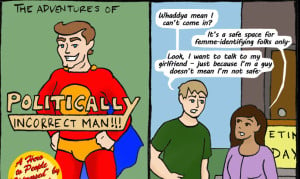
 March 31, 2015 / Sabah Choudrey
March 31, 2015 / Sabah Choudrey Originally published on xoJane and republished here with their permission.
I have a long history of hair removal.
It started when I was very young, too young maybe, but not for us brown girls, us hairy brown girls.
I was about 10 years old, I had a furry upper lip and the kids at school made fun of me.
They made fun of us brown hairy girls. I told my mother and she called the neighbor round, a brown girl, and she waxed it all off us, us hairy brown girls.
I have a long history of hair removal, but so does my sister, so does my mother, and so do her sisters. We’re Pakistani, from South Asia, and for a lot of us that means we are dark-haired and dark-skinned.
It’s just the way we are.
It’s not the way others want us to be.
From Western beauty standards to the male gaze, even from our mothers and sisters and fathers and brothers, we are told to remove our body hair, remove our facial hair, remove our pubic hair . . . .
Return to a pre-pubescent female body, and lighten your skin whilst you’re at it. They aren’t pretty, hairy brown girls.
I type into a Google search bar: “South Asian women hairy” and I find “XXX South Asian Hairy Girls” and other explicit titles navigating me to porn channels, with the occasional advertisement on hair removal and laser treatments.
Just in case being fetishized put you off.
Even though every three weeks my downy moustache ceased to exist, I never thought much of my hair when I was younger.
It grew across my forehead, with my hairline bleeding into my brows and down into my sideburns, thickening around my chin and upper lip.
My arms were covered in a coat of black hair, thickening on my forearms. My legs were the same, a noticeable dark fleece of fur.
That was the second to go.
I remember the day I found out my sister was shaving her legs — she had been doing it for a while. I was so upset with her.
It felt like she had kept this secret from me, and being the same age (we’re twins), I thought we were going to do everything together as hairy brown girls. I felt like she was growing into a woman before me, and I was left behind.
So I started shaving my legs.
I was 13. And I was the last girl in my year at school to do it.
It was a predominantly South Asian school. We were all united by hair, but, of course, you couldn’t tell.
I remember looking at our skinny brown legs during sports class, shivering in skirts whilst we played netball.
I remember listening to conversations about how long shaving our legs takes, how much hassle it is, where we missed a spot, and where we keep catching our ankles.
I remember talking with my best friends about shaving the bare minimum, which was about an inch above the knee, where our shorts and skirts sit, giving the illusion of completely hairless legs.
We called them “hair shorts” and we wore them with a forbidden kind of pride.
I knew I was always hairy. But my parents couldn’t accept that.
My mother wanted to remove it. My dad wanted to know why it was there in the first place.
I was still in secondary school and I had visited the GP countless times about my hair, having blood taken for hormone tests and testosterone checks, being asked about polycystic ovary syndrome (PCOS) and given the contraceptive pill when I wasn’t even old enough to be using it.
This was on top of being waxed, plucked, shaved, lasered, tweezed, and threaded.
Dad would point out the thickening chin hair on my face at a random point in the day and ask, “Does it bother you?”
Those questions bothered me more.
The truth is, there was nothing wrong with me. My hormone levels were fine. I didn’t have PCOS. And with regular and expensive hair removal treatments, my self esteem was doing okay.
As our family general practitioner, Dr. Sharma, said, “It’s just the way you are.”
It’s just the way us hairy brown girls are.
Fast forward with me five or so years and you’ll start to see the irony.
I had moved out of London and down to sunny and gay Brighton. I was out of my brown comfort zone, entering into a world which was predominantly white and privately racist.
I was forced to keep my hair removal a secret, knowing I wouldn’t find solidarity but shock, horror, and disgust.
It took several conversations for me to realize my true identity belonged under a trans-masculine umbrella, and I came to the realization that after years of avoiding and removing hair, I was going to have to embrace it.
It took me two years after I started using he/him/his pronouns to finally let the hair on my face grow. It was really hard.
Even though I presented as male, I couldn’t bring myself to let the hair on my face grow out.
It should have been an easy decision — I know many trans men who would jump at the chance to have a beard before a prescription.
But it symbolized the hairy brown girl I was for so long, reminding me I was un-pretty and unwanted. It was connected to so much pain.
The hair on my face didn’t represent masculinity at all. My beard wasn’t what made me a man.
I remember sitting with an endocrinologist in a private gender identity clinic, hoping for a prescription for testosterone.
I was hoping the appointment would be fast and easy but this doctor was very fixated on my facial hair.
He was white.
He presented me with a test, called the Ferriman-Gallwey Score. It’s a crude set of simple drawings of different parts of the body with varying degrees of hair. Its most practical use is evaluating hirsutism in women and diagnosing PCOS.
Here the patient is expected to point to which picture reflects their hair growth. Considering it is a Caucasian set of photos, none of the pictures reflected my hair growth, surprisingly.
I felt so much shame and fear, and I panicked. Was he taking into account cultural differences? Did he understand how totally flawed and rudimentary this test is?
I don’t think it would have mattered what score I ended up with. I was just a hairy brown girl so I shut my hairy brown mouth and left.
The question always comes up, “How long have you been on T for? What are you on?” And I feel a sudden panic to lie and make something up, make it up that I’m using testosterone.
I want to lie because I’m not using hormones and I don’t think I’m trans enough. I want to lie because I am so deeply embarrassed of the hairy brown girl in front of them.
I declare, “I’m not on hormones actually.”
And there’s a shift.
For a second, they see the hairy brown girl, they see her in the way the kids at school saw her. And then they come back with, “You’re so lucky. You pass so well. I’m so jealous of your beard.”
Without thinking about what it was like being a hairy brown girl, my hairy brown girl experience is erased.
No one sees my color. They just see my hair.
The comment always comes up, “You’re so brave, growing that out, I really respect that,” and I realize people see me as a girl with a beard.
Something hits me, and it’s painful.
For a second, they see the hairy brown girl. And I realize the lips those words came out belong to a face, and that face has white skin and thirsty eyes that are looking at me and flirting with me and undressing me.
“I’m a guy, I’m trans. I’m a trans guy.” I stutter, feeling a disappointment I can’t quite describe.
I’m reduced to a fetish Google knows very well.
No one sees my gender. And they just see my hair.
And I’m taken back to when I was a child. I was about 10 years old. I had a furry upper lip and the kids at school made fun of me.
They still make fun of us, hairy brown girls.
[do_widget id=”text-101″]
Sabah Choudrey is a Pakistani trans activist with a passion for his community. His tiny head is full of big ideas, having founded Trans Pride Brighton in 2012, the first trans march and trans celebration in the UK, the QTIPOC Brighton Network for queer, trans and intersex people of colour, and desiQ for queer South Asian people in London/South East area. Check out his website and follow him on Twitter @SabahChoudrey.





